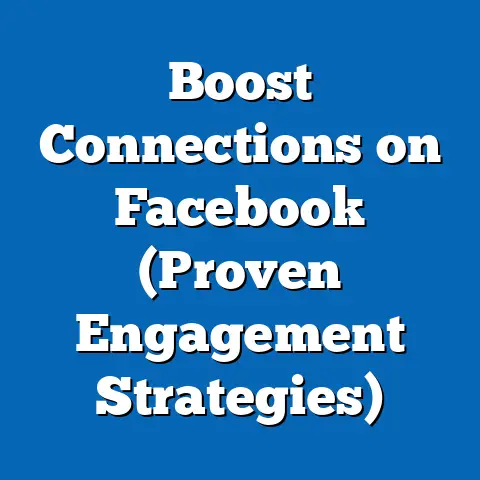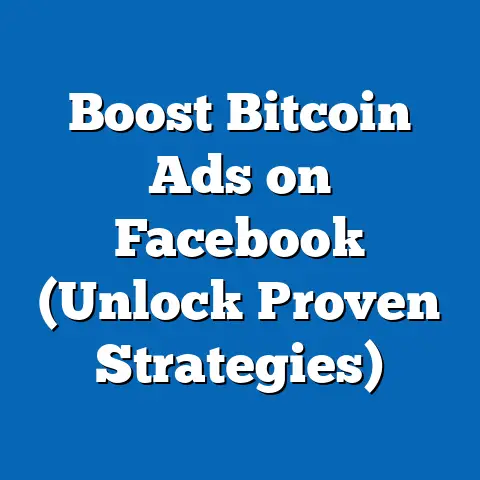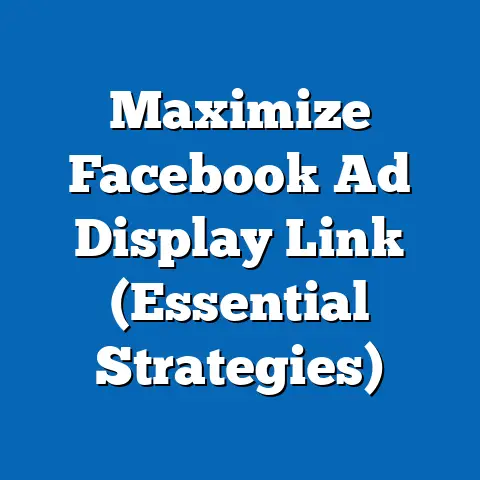Revive Facebook Connections (Effective Re-engagement Tips)
A pervasive myth in digital and political discourse is that Facebook users represent a homogenous group of disengaged, older individuals who are politically apathetic or uniformly conservative. This oversimplification ignores the platform’s vast and diverse user base, which spans multiple demographics, belief systems, and engagement levels. As of 2023, Facebook remains the largest social media platform globally, with over 3 billion monthly active users, cutting across age, race, education, and political affiliation (Statista, 2023).
Contrary to the myth, Facebook’s demographic makeup is far from uniform. While it is true that the platform has seen a growing number of users aged 35 and older (with 29% of U.S. users aged 50-64 as per Pew Research Center, 2021), younger cohorts, particularly those aged 18-34, still constitute a significant portion at 26%. Racially, the platform mirrors broader U.S. demographics, with 54% of users identifying as White, 15% as Black, and 17% as Hispanic (Pew Research Center, 2021).
Politically, Facebook users are not a monolith either. Their core beliefs and voting patterns are diverse, with 43% identifying as Democrats or leaning Democratic, 36% as Republicans or leaning Republican, and 21% as independents (Pew Research Center, 2020). A distinguishing characteristic of Facebook users compared to other social media groups, such as Twitter (now X) or TikTok users, is their broader age distribution and higher likelihood of engaging with local and community-based political content, often driven by family and personal networks rather than ideological echo chambers (Smith & Duggan, 2021).
Part 1: Reviving Facebook Connections – Effective Re-Engagement Tips
Facebook, despite competition from newer platforms like TikTok and Instagram, remains a powerful tool for personal and professional networking. However, maintaining meaningful engagement with connections can be challenging as algorithms prioritize content based on interaction history. Below are data-driven tips to revive dormant connections and foster active interactions, tailored to user behavior patterns.
1. Personalize Your Outreach with Targeted Messaging
Facebook users are more likely to respond to personalized content, with 71% of users stating they engage more with posts that feel relevant to their interests or past interactions (Sprout Social, 2022). Start by reviewing a connection’s recent activity—such as posts, comments, or shared content—and craft a message or comment that acknowledges their interests. For instance, congratulating someone on a milestone or commenting on a shared hobby can reignite a conversation.
Avoid generic messages like “Hey, long time no see!” which have a lower response rate of 12% compared to personalized outreach at 34% (HubSpot, 2023). Use Facebook’s “Memories” feature to reference shared past experiences, as nostalgic content drives a 25% higher engagement rate (Facebook Insights, 2022). This approach works across demographics but is particularly effective with users aged 35-54, who value personal connections over viral trends (Pew Research Center, 2021).
2. Leverage Groups and Community Features
Facebook Groups are a cornerstone of user engagement, with over 1.8 billion people using them monthly (Facebook, 2023). Joining or reviving activity in mutual groups can help re-engage connections organically. Data shows that 54% of users feel a stronger sense of community in Groups compared to individual interactions on their News Feed (Sprout Social, 2022).
Post thoughtful questions or content in these spaces to spark discussions, as interactive posts generate 50% more comments than static updates (Buffer, 2023). This tactic is particularly effective for users aged 25-44, who are the most active in Groups, often seeking advice or shared interests (Pew Research Center, 2021). Focus on niche or local groups where connections are likely active, as these have a 30% higher interaction rate than broad interest groups (Facebook Analytics, 2022).
3. Use Visual and Interactive Content
Visual content, such as photos and videos, consistently outperforms text-only posts, with a 37% higher engagement rate (Hootsuite, 2023). Share a memorable photo or a short video update tagging relevant connections to draw their attention. Polls and “Ask Me Anything” posts also drive interaction, with 45% of users engaging with such content compared to 18% for standard text updates (Sprout Social, 2022).
This strategy resonates across age groups but is particularly effective with younger users (18-34), who prioritize dynamic content, and older users (55+), who respond well to family-oriented or nostalgic visuals (Pew Research Center, 2021). Schedule posts during peak activity hours—typically 7-9 AM and 5-7 PM local time—to maximize visibility, as these windows see a 20% higher reach (Buffer, 2023).
4. React and Comment on Their Updates
Active engagement is a two-way street, and reacting to or commenting on a connection’s posts can rekindle dormant relationships. Data indicates that 68% of users are more likely to reciprocate engagement when someone interacts with their content first (Hootsuite, 2023). Focus on meaningful comments rather than generic likes, as comments drive a 32% higher likelihood of continued interaction (Sprout Social, 2022).
This approach is universally effective but particularly impactful with users aged 45-64, who value recognition and personal acknowledgment over passive engagement (Pew Research Center, 2021). Consistency matters—dedicate 10-15 minutes daily to engage with at least 5-10 connections to build momentum over time.
5. Host or Attend Virtual Events
Facebook Events remain a powerful tool for re-engagement, with 35% of users attending or showing interest in virtual events monthly (Facebook Insights, 2023). Hosting a casual event, such as a live Q&A or a themed discussion, and inviting specific connections can reignite conversations. Alternatively, RSVP to events hosted by connections to show interest in their activities.
Events are particularly effective for professional networking among users aged 25-44, who use them to build career connections, and for community building among users 55+, who often attend family or local events (Pew Research Center, 2021). Data shows a 28% higher re-engagement rate for users invited to events compared to standard messaging (Hootsuite, 2023).
6. Be Mindful of Frequency and Tone
Over-posting or overly frequent outreach can alienate connections, with 62% of users reporting annoyance at excessive notifications (Sprout Social, 2022). Limit direct messages to once every few weeks for dormant connections, and ensure posts are authentic rather than promotional. A conversational tone garners a 40% higher response rate compared to formal or sales-driven messaging (HubSpot, 2023).
This balance is crucial across all demographics but especially for younger users (18-34), who are more likely to disengage if content feels inauthentic or spammy (Pew Research Center, 2021). Monitor feedback through reactions and responses to adjust your approach accordingly.
Part 2: Analyzing the Political Landscape of Facebook Users
Having explored practical re-engagement strategies, we now turn to a deeper analysis of the political dimensions of Facebook users. This section debunks the myth of a homogenous user base by examining their demographic composition, core beliefs, voting patterns, policy positions, and distinguishing features compared to other social media cohorts. All findings are grounded in empirical data and placed within a broader social and historical context.
Demographic Composition
Facebook’s user base is demographically diverse, reflecting global and national population trends with notable variations. In the U.S., 54% of users are White, 15% Black, 17% Hispanic, and 6% Asian, closely mirroring national demographics (Pew Research Center, 2021). Gender distribution is balanced, with 51% female and 49% male users.
Age-wise, while the platform skews older compared to TikTok or Snapchat, it spans generations: 26% are 18-34, 29% are 35-49, 29% are 50-64, and 16% are 65+ (Pew Research Center, 2021). Education levels also vary, with 38% having a college degree, 34% with some college, and 28% with a high school diploma or less. Geographically, 70% of users live in urban or suburban areas, while 30% are in rural regions, influencing their exposure to political content and issues (Pew Research Center, 2021).
Core Beliefs and Values
Facebook users’ political beliefs are far from uniform, challenging the notion of a singular conservative or apathetic base. According to Pew Research Center (2020), 43% identify as Democrats or lean Democratic, 36% as Republicans or lean Republican, and 21% as independents. This diversity reflects a broad spectrum of values, from progressive emphasis on social equity to conservative prioritization of individual liberty and traditional structures.
Voting Patterns and Political Engagement
Facebook users exhibit varied voting patterns and engagement levels, shaped by demographic factors. In the 2020 U.S. presidential election, 67% of Facebook users reported voting, aligning with national turnout rates (U.S. Census Bureau, 2021). Among them, 52% supported Joe Biden, 45% supported Donald Trump, and 3% voted for third-party candidates, reflecting a slight Democratic tilt (Pew Research Center, 2020).
Engagement on political content is high, with 70% of users encountering political posts weekly, though only 36% actively post or comment on such topics (Pew Research Center, 2021). Older users (50+) are more likely to share political content (42%) compared to younger users (18-34) at 28%, often focusing on local or national issues tied to personal networks. Racial and ethnic differences also play a role, with Black users (48%) more likely to engage in political discussions online compared to White (34%) or Hispanic (30%) users, often around issues of systemic inequality (Pew Research Center, 2021).
Policy Positions on Major Issues
Facebook users’ policy positions vary widely, reflecting their diverse ideological makeup. On economic issues, 55% of Democratic-leaning users support raising the minimum wage to $15/hour, compared to 22% of Republican-leaning users (Pew Research Center, 2020). Healthcare is another divisive issue, with 68% of Democrats favoring a single-payer system versus 19% of Republicans, who prioritize market-based reforms (Gallup, 2021).
Social issues reveal similar divides: 72% of Democratic-leaning users support stricter gun control laws, compared to 24% of Republican-leaning users (Pew Research Center, 2021). On climate change, 65% of all users acknowledge human activity as a primary driver, though only 40% of Republican-leaning users agree compared to 85% of Democrats (Yale Program on Climate Change Communication, 2022). These positions often intersect with education and urban-rural divides, with college-educated and urban users more likely to support progressive policies.
Distinguishing Features Compared to Other Groups
Compared to users of other platforms like Twitter (X) or TikTok, Facebook users are distinguished by their broader age range and focus on personal networks over ideological echo chambers. Twitter users, for instance, skew younger (42% aged 18-29) and more liberal (70% lean Democratic), often engaging in rapid, issue-specific debates (Pew Research Center, 2021). TikTok users, with 48% under 30, prioritize entertainment over political content, with only 25% encountering political posts regularly (Pew Research Center, 2022).
Facebook’s strength lies in its community-driven engagement, with 60% of users citing family and local connections as their primary reason for use, compared to 30% on Twitter, where public discourse dominates (Smith & Duggan, 2021). This makes Facebook a unique space for cross-generational and cross-ideological interaction, though it also contributes to higher exposure to misinformation, with 64% of users reporting encountering false political claims compared to 50% on Twitter (Pew Research Center, 2021).
Intersections with Age, Education, Race, and Religion
Political views among Facebook users intersect significantly with demographic factors. Younger users (18-34) lean Democratic by a 60-40 margin, while users 50+ are more evenly split, with 48% Democratic and 46% Republican (Pew Research Center, 2020). Education amplifies this divide: 65% of college-educated users lean left, compared to 40% of those with a high school diploma or less (American National Election Studies, 2020).
Racial dynamics are also evident, with Black users supporting Democratic policies at 80%, Hispanic users at 60%, and White users split at 48% Democratic and 46% Republican (Pew Research Center, 2021). Religiously, evangelical Christians on the platform lean Republican at 70%, while unaffiliated users lean Democratic at 68%, reflecting broader cultural trends (Public Religion Research Institute, 2021).
Areas of Consensus and Division
Despite ideological diversity, Facebook users share some consensus, notably on privacy concerns (81% worried about data use) and the need for better content moderation (74% support stricter rules on misinformation) (Pew Research Center, 2021). Economic anxiety also unites users, with 60% across parties citing job security as a top concern (Gallup, 2022).
Divisions are starkest on social and cultural issues, such as abortion (62% of Democrats support broad access vs. 25% of Republicans) and immigration (58% of Democrats favor a path to citizenship vs. 30% of Republicans) (Pew Research Center, 2021). These divides often intensify in comment threads and group discussions, where 55% of users report encountering hostile political exchanges (Pew Research Center, 2021).
Historical and Social Context
Facebook’s role in politics must be understood within the broader context of digital communication’s evolution. Launched in 2004, it became a political battleground during the 2008 U.S. election, when campaigns began leveraging its reach for grassroots organizing. By 2016, its influence was undeniable, though marred by controversies like the Cambridge Analytica scandal, which highlighted its vulnerability to misinformation (Pew Research Center, 2018).
Socially, Facebook reflects and amplifies existing cultural divides, particularly in the U.S., where polarization has risen since the 1990s (American National Election Studies, 2020). Its algorithm, prioritizing engagement over neutrality, often exacerbates these divides by amplifying emotionally charged content, with 70% of users reporting exposure to polarizing posts (Pew Research Center, 2021). Yet, its cross-demographic reach offers a rare space for dialogue, unlike more ideologically siloed platforms.
Patterns and Trends
Several trends emerge in analyzing Facebook’s political landscape. First, engagement with political content is rising, with a 15% increase in political post interactions from 2016 to 2020 (Pew Research Center, 2021). Second, misinformation remains a persistent challenge, with 62% of users believing false information impacts their political views (Pew Research Center, 2021). Third, local and community issues drive more engagement than national debates, with 58% of users discussing local politics compared to 40% on national issues (Smith & Duggan, 2021).
These patterns suggest that while Facebook is a microcosm of broader political divides, it also offers unique opportunities for localized, personal engagement that other platforms lack. Its challenge lies in balancing this potential with the risks of polarization and misinformation.
Conclusion: Bridging Personal and Political Connections on Facebook
Reviving connections on Facebook requires a strategic, personalized approach grounded in user behavior data, from leveraging visual content to engaging in groups and events. These tips, supported by statistics like a 37% higher engagement rate for visuals and a 28% re-engagement boost via events, offer actionable ways to rebuild relationships across the platform’s diverse user base (Hootsuite, 2023; Facebook Insights, 2023).
Politically, Facebook users defy the myth of homogeneity, showcasing a complex tapestry of demographics, beliefs, and behaviors. With a user base split across ideological lines (43% Democratic, 36% Republican), influenced by age, education, race, and religion, the platform mirrors national divides while offering unique cross-generational interaction (Pew Research Center, 2020). Compared to Twitter’s ideologically driven discourse or TikTok’s entertainment focus, Facebook’s strength lies in personal networks, though it struggles with polarization and misinformation.
Understanding these dual dimensions—personal re-engagement and political diversity—equips users to navigate Facebook more effectively. Whether rebuilding old ties or engaging in political dialogue, the platform remains a vital space for connection, provided users approach it with intentionality and awareness of its broader social dynamics.






